In the realm of nursing care, the concept of “knowledge deficit” plays a pivotal role in patient education. Patient education is a cornerstone of effective healthcare, aimed at empowering individuals with the information they need to make informed decisions about their health and manage their conditions.
Utilize this comprehensive nursing care plan and management guide to effectively educate patients and provide health teachings. Gain knowledge on the nursing assessment process, evidence-based nursing interventions, goal-setting, and nursing diagnoses specific to addressing knowledge deficit.
What is a Knowledge Deficit?
Knowledge deficit (deficient knowledge) refers to a lack of cognitive or psychomotor abilities necessary for health restoration, preservation, or promotion. Nurses are crucial in identifying and addressing knowledge deficits through client education, considering the cognitive, affective, and psychomotor domains. Healthcare providers also contribute to client education, but nurses have a unique responsibility to provide ongoing education and support. Factors such as age, cognitive abilities, cultural beliefs, and physical limitations must be considered when designing an effective teaching plan to meet individual client needs.
Causes
Identifying the specific causes of a client’s knowledge deficit is crucial for developing targeted and effective client education strategies. Here are the common causes of deficiency in knowledge and the need for client education:
- Limited access to education. Clients may have limited access to educational resources or face barriers to obtaining reliable information, such as a lack of internet access or limited availability of educational materials.
- Language barriers. Clients who do not speak the same language as their healthcare providers may struggle to understand and comprehend the information provided to them.
- Health literacy. Individuals with low health literacy may have difficulty understanding medical terminology, interpreting healthcare information, and applying it to their own situations.
- Cognitive impairments. Clients with cognitive impairments, such as dementia or intellectual disabilities, may struggle to retain and process information, leading to a knowledge deficit.
- Emotional distress. High levels of stress, anxiety, or emotional distress can impair a client’s ability to concentrate and retain information, hindering their understanding and knowledge acquisition.
- Cultural beliefs and practices. Cultural beliefs and practices may influence a client’s perception of illness, treatment options, and healthcare practices, leading to a knowledge deficit if these beliefs differ from evidence-based medical recommendations.
- Time constraints during healthcare visits. Limited time during healthcare visits may prevent healthcare providers from adequately addressing all client questions or providing comprehensive education.
- Lack of client engagement. Some clients may not actively engage in their healthcare or take responsibility for their own learning, resulting in a knowledge deficit.
- Information overload. Clients may become overwhelmed by a large amount of complex medical information, making it challenging to absorb and retain knowledge.
- Miscommunication. Poor communication between healthcare providers and clients, including using complex language, technical jargon, or ineffective teaching methods, can contribute to a knowledge deficit.
- Prioritization of information. Clients may struggle to identify and prioritize essential information from less relevant or confusing details, leading to gaps in knowledge.
- Discrepancies in information sources. Clients may encounter conflicting information from various sources, such as the internet, friends, or family, which can contribute to confusion and a knowledge deficit.
Signs and Symptoms
The following are the common signs and symptoms or defining characteristics associated with knowledge deficit:
- Verbalization of Lack of Information. Statements such as “I don’t know how to manage my condition,” or “I’m not sure what to do next.”
- Asking of Questions. Repeated inquiries about procedures, medications, or self-care techniques.
- Inability to Demonstrate Required Skills. Failure to correctly perform self-care activities, such as insulin injection or wound dressing changes.
- Misunderstanding or Misinterpretation of Instructions. Incorrectly following medication schedules or dietary restrictions.
- Non-Compliance to Treatment Regimen. Skipping medications or ignoring prescribed therapies due to lack of understanding.
- Incorrect Execution of Care Procedures. Performing tasks incorrectly, such as improper use of medical devices or equipment.
- Expressed Fears or Misconceptions. Showing anxiety or holding false beliefs about their health condition or treatment.
- Desire for More Information or Education. Expressing a wish to receive additional information or training related to their health.
- Display of Confusion or Uncertainty. Appearing unsure or hesitant when making health-related decisions.
- Incorrect Answers During Teaching Sessions. Providing wrong responses when asked to explain aspects of their condition or care.
- Inability to Explain Disease Process or Management. Difficulty articulating how their condition affects their body or how treatments work.
- Repetition of the Same Questions. Asking the same questions multiple times despite receiving answers.
Nursing Care Plans and Management
Nursing care plans for clients with knowledge deficits are pivotal in bridging the information gap between healthcare providers and clients. These plans are meticulously crafted strategies that encompass a range of interventions and educational approaches aimed at empowering clients to take an active role in their own care. This comprehensive approach to care involves not only disseminating medical knowledge but also tailoring it to suit the client’s individual needs, preferences, and learning styles.
Nursing Problem Priorities
The following are the nursing priorities for clients with knowledge deficits:
- Ineffective health or self-care management. Lack of understanding about the nature of their health condition, treatment plan, or necessary lifestyle modifications can hinder the client’s ability to manage their health effectively.
- Development of complications. A knowledge deficit can lead to improper self-care practices, missed medications, or failure to recognize signs of deteriorating health. This increases the risk of complications related to the underlying health condition.
- Decreased medication adherence. Clients may not fully comprehend the purpose, dosage, administration, or potential side effects of their medications. This lack of knowledge can compromise the effectiveness of treatment and jeopardize client safety.
- Communication barriers. Language barriers, cultural differences, and health literacy issues can hinder effective communication between healthcare professionals and clients.
Nursing Assessment
Assessment is required in order to recognize the client’s existing knowledge about the present situation. The following are common signs of knowledge deficit:
1. Lack of understanding or confusion about the condition or treatment.
When a person lacks understanding or feels confused about their condition or treatment, it can hinder their ability to make informed decisions and participate actively in their healthcare. Addressing this knowledge deficit is essential to promote effective self-care and treatment adherence.
2. Inability to correctly explain or demonstrate self-care techniques or medication administration.
Proper self-care techniques and medication administration are crucial for managing a health condition. If a person is unable to accurately explain or demonstrate these techniques, it suggests a lack of knowledge that may compromise their ability to care for themselves effectively.
3. Limited knowledge about the signs and symptoms of the condition or potential complications.
Having limited knowledge about the signs and symptoms of a condition or potential complications can lead to delayed recognition of worsening symptoms or the need for medical intervention. Educating individuals about these aspects enables early detection and timely management of their health condition.
4. Difficulty in making informed decisions related to health management.
Making informed decisions is vital for individuals to actively participate in their healthcare. A knowledge deficit can hinder their ability to weigh the pros and cons of different options and choose the most suitable approach for their health management.
5. Failure to follow prescribed treatment plans or medication regimens.
Non-adherence to prescribed treatment plans or medication regimens can significantly impact treatment outcomes and overall health. It may result from a lack of understanding about the importance of adherence or the potential consequences of non-compliance.
6. Persistent reliance on inaccurate or outdated information.
Relying on inaccurate or outdated information can lead to inappropriate actions, ineffective self-care, or misconceptions about the condition or treatment. Updating and correcting misinformation is crucial to ensure accurate knowledge and appropriate decision-making.
7. Inability to ask relevant questions or seek appropriate resources for information.
Effective patient education involves active engagement and the ability to seek clarification or additional information. When individuals are unable to ask relevant questions or identify appropriate resources, it suggests a knowledge deficit that hinders their ability to acquire accurate and comprehensive knowledge.
8. Anxiety or frustration related to a lack of knowledge or understanding.
A lack of knowledge or understanding can lead to emotional distress, anxiety, or frustration. Addressing these emotions through education and support can help individuals feel empowered and more confident in managing their health.
9. Poor compliance with recommended lifestyle modifications or preventive measures.
Knowledge deficits can contribute to poor compliance with lifestyle modifications and preventive measures. Educating individuals about the rationale and benefits of these changes promotes understanding and enhances their motivation to adopt and maintain healthy behaviors.
10. Lack of awareness regarding available support systems or community resources.
Knowledge about available support systems and community resources is essential for individuals to access the necessary assistance, guidance, or additional support they may need. Addressing this knowledge deficit ensures individuals can fully utilize available resources to optimize their health outcomes.
Nursing Diagnoses
Following a thorough assessment, a nursing diagnosis is formulated to specifically address the challenges associated with deficient knowledge based on the nurse’s clinical judgement and understanding of the patient’s unique health condition. While nursing diagnoses serve as a framework for organizing care, their usefulness may vary in different clinical situations. In real-life clinical settings, it is important to note that the use of specific nursing diagnostic labels may not be as prominent or commonly utilized as other components of the care plan. It is ultimately the nurse’s clinical expertise and judgment that shape the care plan to meet the unique needs of each patient, prioritizing their health concerns and priorities. However, here are some examples to help get your started:
- Knowledge Deficit related to unfamiliarity with (for example) hypertension management principles due to new diagnosis of hypertension.
- Deficient Knowledge related to lack of exposure to post-operative care requirements following discharge after cardiac surgery.
- Deficient Knowledge related to unawareness of dietary management needs specific to chronic kidney disease progression.
- Deficient Knowledge related to limited previous experience or instruction on breastfeeding techniques and benefits for infant health.
- Deficient Knowledge related to not understanding the importance of consistent monitoring and dietary interactions while on anticoagulant therapy (e.g., warfarin).
- Deficient Knowledge related to insufficient education on asthma management strategies, including correct inhaler technique and action plan development.
Nursing Goals
Goals and expected outcomes may include:
- The client will verbalize understanding of the disease process and treatment regimen.
- The client will identify drug side effects and possible complications that necessitate medical attention.
- The client will list signs and symptoms that require immediate intervention.
- The client will describe reasons for therapeutic actions and treatment regimen.
- The client will verbalize understanding and participate in therapeutic actions.
- The client will identify their own stress and risk factors and some techniques for handling them.
- The client will initiate necessary lifestyle and behavioral changes.
- The client will correctly perform necessary procedures and explain reasons for actions.
- The client will keep follow-up appointments.
- The client will demonstrate the ability to provide self-care.
Nursing Interventions and Actions
These nursing interventions and actions are aimed at addressing knowledge deficits to empower clients to make informed decisions, actively engage in their healthcare, and attain optimal health outcomes.
1. Assessment for Knowledge Deficit
Incorporating knowledge deficit assessment as a routine practice allows the nurse to identify and address gaps in client understanding, leading to safer, more informed, and better-managed healthcare experiences.
Assessing readiness to learn
1. Identify the learner: the client, family, significant other, or caregiver.
Some clients especially older adults or the terminally ill view themselves as dependent on the caregiver, therefore will not allow themselves to be part of the educational process. Lient care needs extend beyond discharge, and the burden of managing complex home care during the recovery process falls on the client and their family members (Kaya et al., 2018).
2. Assess the ability to learn or perform desired health-related care.
Cognitive impairments must be recognized so an appropriate teaching plan can be outlined. The nurse must observe and assess the client’s ability to perform ADLs to determine the level of independence in self-care and the need for nursing intervention. The nurse should also be aware of the client’s medical conditions or other health problems, the effect that they have on the ability to perform ADLs, and the family’s involvement in the client’s ADLs.
3. Assess the motivation and willingness of the client to learn.
Learning requires energy. Clients must see a need or purpose for learning. They also have the right to refuse educational services. The client’s motivations provoke them to search for possible treatments and to follow these treatments in spite of their hardships and difficulties. Therefore, it plays an essential role in determining the outcome of treatments and bearing its complications (Hosseini et al., 2021).
4. Determine the client’s self-efficacy to learn and apply new knowledge.
Self-efficacy refers to a person’s confidence in his or her own ability to perform a behavior. A first step in teaching may be to foster increased self-efficacy in the learner’s ability to learn the desired information or skills. People’s belief in their efficacy has a direct impact on meeting one’s goals. Therefore, to improve self-management of disease processes, clients must have increased self-efficacy and believe they can manage their disease (Farley, 2019).
5. Identify cultural influences on health teaching.
Interventions need to be specific to each client considering their individual differences and backgrounds. Culture encompasses values, ideals, and behaviors, and the traditions within each culture provide the framework for solving issues and concerns of daily living. Culture is a major variable influencing readiness to learn because it affects how people learn and what information can be learned.
6. Assess the client’s physical readiness for learning.
Physical readiness is of vital importance, because until the client is physically capable of learning, attempts at teaching and learning may be both futile and frustrating. Clients who are in pain or are short of breath will not be able to concentrate enough during health education.
7. Assess the client’s emotional readiness.
Emotional readiness also affects the client’s motivation to learn. A client who has not accepted an existing illness or the threat of illness is not motivated to learn. Until the client recognizes the need to learn and demonstrates an ability to learn, teaching efforts may be all for naught. However, it is not always wise to wait for the client to become emotionally ready to learn because that time may never come unless the nurse makes an effort to stimulate the client’s motivation.
8. Assess for the presence of anxiety.
Illness and the threat of illness are usually accompanied by anxiety and stress. Because learning involves behavior change, it often produces mild anxiety, which can be a useful motivating factor. The presence of severe anxiety, however, may impede the client’s learning process.
9. Utilize learning assessment guides as available.
Many learning assessment guides are available for nurses to use to assess the client’s readiness to learn. Some guides are directed toward the collection of general health information, whereas others are specific to medication regimens or disease processes. Such guides facilitate assessment but must be adapted to the responses, problems, and needs of each client.
10. Note the client’s verbal and nonverbal communication cues.
The nurse must be aware of both verbal and nonverbal communication behaviors. There are vast differences in culturally defined communication behaviors. Before discussing of personal information, it is important to understand cultural practices related to nonverbal communication during conversation. For some, direct eye contact is a sign of disrespect. Be aware of cultures in which disagreement is perceived as impoliteness.
11. Assess the client’s learning style.
Learning patterns are developed as a child and the “learner” discovers what works best for their individual learning style. Learning patterns include visual, auditory, and kinesthetic. Visual learner prefers to see what they are learning. An auditory learner needs to hear the message or instructions being given. This type of learner wants to be talked through a process rather than reading about it first. The kinesthetic learner does not like lectures or discussions, preferring the movement of the skill or task.
Assess for barriers to learning
1. Assess the client’s literacy.
Literacy is defined as an “individual’s ability to read, write, and speak in a language and compute and solve problems at levels of proficiency necessary to function on the job and in society, to achieve one’s goals and to develop one’s knowledge and potential. According to the US Department of Education, an estimated nearly one-half of Americans (90 million) have difficulty understanding and acting on health information. These studies have linked low health literacy with delayed diagnosis, poor disease management skills, and higher healthcare costs.
2. Determine the priority of learning needs within the overall care plan.
This is to know what needs to be discussed especially if the client already has a background about the situation. Knowing what to prioritize will help prevent wasting valuable time. A client’s readiness for discharge learning can be assessed from the perspectives of the care provider, the client themselves and/or their family members. Client perception is also an important factor in readiness for discharge and it represents the client’s reality.
3. Allow the client to open up about the previous experience and health teaching.
Older adults often share life experiences in each learning session. They learn best when teaching builds on previous knowledge and experience. Traditionally, clients receive information from their primary care provider via verbal or written communication during an office visit. These are considered passive approaches to education, and, although they may facilitate increased understanding, they do not ensure increased self-efficacy or behavior changes.
4. Observe and note existing misconceptions regarding the topic to be taught.
An assessment provides an important starting point in education. Knowledge serves to correct faulty ideas. Asking the client and their family about major concerns or fears is an important way to learn about any misinformation that may be contributing to anxiety. Simple, direct information should be provided to dispel misconceptions.
5. Acknowledge racial/ethnic differences at the onset of care.
Acknowledgment of racial/ethnic issues will enhance communication, establish rapport, and promote treatment outcomes. Sometimes people do not accept health teaching because it conflicts with culturally mediated values. Before beginning health teaching, nurses must conduct an individual cultural assessment instead of relying on generalized assumptions about a particular culture.
6. Assess barriers to learning (e.g., perceived change in lifestyle, financial concerns, cultural patterns, lack of acceptance by peers or coworkers).
The client brings to the learning situation a unique personality, established social interaction patterns, cultural norms and values, and environmental influences. Not every client will be equipped with the same level of knowledge and understanding about the disease process. Readiness for discharge can be influenced by many factors such as age, sex, socioeconomic status, comorbidity, and income.
7. Determine the client’s primary language used and assess the need for a translator.
Thoroughly assessing the client’s comprehension and the need for a translator is vital. An estimated 40 different languages are spoken by the clients who use the services at one Midwest community hospital. Every attempt must be made to provide a qualified translator whether the translator is physically present or available via telephone translation line.
8. Assess the client’s need for visual or hearing aids.
As a person ages, visual clarity and auditory acuity will decrease, making it difficult for the client to receive information. Many times, a client may refuse to wear corrective devices. Without these devices, the client may not be able to understand or receive the information given adequately.
2. Promoting Health Literacy and Client Education
Health literacy plays an important role in addressing knowledge deficits and ensuring effective communication and understanding between healthcare professionals and clients.
Client and setting preparation
1. Consider the client’s learning style, especially if the client has learned and retained new information in the past.
Every individual has his or her learning style, which must be a factor in planning an educational program. Some may prefer written materials over visual materials, while others prefer group sessions over individual instruction. Matching the learner’s preferred style with the educational method will facilitate success in the mastery of knowledge.
2. Render physical comfort for the client.
Based on Maslow’s theory, basic physiological needs must be addressed before client education. Ensuring physical comfort allows the client to concentrate on what is being discussed or demonstrated. Scheduling a teaching session at a time of day when a client is fatigued, uncomfortable, or anxious about a pending diagnostic or therapeutic procedure, or when visitors are present, is not conducive to learning.
3. Grant a calm and peaceful environment without interruption.
A calm environment allows the client to concentrate and focus more completely. Learning may be optimized by minimizing factors that interfere with the learning process. For example, the room temperature, lighting, noise levels, and other environmental conditions should be appropriate to the learning situation.
4. Provide an atmosphere of respect, openness, trust, and collaboration.
Conveying respect is especially important when providing education to clients with different values and beliefs about health and illness. A person’s values include beliefs about behaviors that are desirable and undesirable. The nurse must know what value the client places on health and healthcare. When the nurse is unaware of the client’s values, misunderstanding, lack of cooperation, and negative health outcomes may occur.
Initiate health literacy and promote client education
1. Identify the teaching style appropriate for the client.
The nurse must adapt the teaching materials to the preferred learning style. For the visual learner, the nurse will have materials for the client to read or watch. The information should be well-organized, interesting, appealing, and easy to read. For the auditory learner, the nurse should rephrase important points and questions in several different ways to communicate the intended message. Kinesthetic learners prefer frequent breaks so that they can move around. Providing samples will allow the kinesthetic learner to practice what they are learning, verifying comprehension through return demonstration.
2. Be familiar with different teaching methods.
Teaching techniques and methods enhance learning if they are appropriate for the client’s needs, numerous techniques are available, including the following:
- 2.1. Lectures. Lectures are explanation methods of teaching and should be accompanied by discussion because discussion affords learners opportunities to express their feelings and concerns, ask questions, and receive clarification.
- 2.2. Group teaching. Group teaching allows clients not only to receive needed information but also to feel secure as members of a group.
- 2.3. Demonstration and practice. Demonstration and practice are significant when teaching skills. The nurse should demonstrate the skill and then give the learner ample opportunity for practice.
- 2.4. Reinforcement and follow-up. Nurses must allow enough time for the client to learn and provide reinforcement. Follow-up sessions are imperative to promote the learner’s confidence in their abilities and to plan for additional teaching sessions.
- 2.5. Motivational interviewing. Pilot research suggests that using motivational interviewing as an enhanced educational method in an acute inpatient setting can increase both client and caregiver knowledge as well as client satisfaction.
- 2.6. Electronic information. Electronic technologies are used to provide health information. Examples are interactive or noninteractive Internet learning, an online self-paced program, or a structured online course. There are also DVDs, CD-ROMs, podcasts, and recorded programs available.
3. Include the client in creating the teaching plan, beginning with establishing objectives and goals for learning at the beginning of the session.
Goal setting allows the learner to know what will be discussed and expected during the session. Adults tend to focus on here-and-now, problem-centered education. Teaching is most effective when the objectives both of the client and the nurse are in agreement. Learning begins with establishing goals that are appropriate to the situation and realistic in terms of the client’s ability and desire to achieve them.
4. Consider what is important to the client.
Allowing the client to identify the most significant content to be presented first is the most effective. Involving the client and the family in establishing the care plan and in planning health strategies promotes their cooperation in the implementation of the teaching plan.
5. Involve the client in writing specific outcomes for the teaching session, such as identifying what is most important to learn from their viewpoint and lifestyle.
Client involvement improves compliance with health regimens and makes teaching and learning a partnership. The outcomes of teaching strategies can be stated in terms of the expected behaviors of clients, families, or both. Outcomes should be realistic and measurable, and the critical time periods for attaining them should be identified.
6. Initiate a learning contract.
Using a learning contract or agreement can also be a motivator for learning, such a contract is based on the assessment of client needs; healthcare data; and specific, measurable goals. The learning contract is recorded in writing and contains methods for ongoing evaluation. A well-designed learning contract is realistic and positive. A series of measurable goals is established, beginning with small, easily attainable objectives and progressing to more advanced goals.
7. Explore reactions and feelings about changes.
Assessment assists the nurse in understanding how the learner may respond to the information and possibly how successful the client may be with the expected changes. An evaluation must be made to determine what was effective and what needs to be changed or reinforced. It cannot be assumed that clients have learned just because teaching has occurred; learning does not automatically follow the teaching.
8. Support self-directed, self-designed learning.
Clients know what difficulties will transpire in their own environments, and they must be encouraged to approach learning activities from their priority needs. The impact of health literacy on client self-management was explored by several different studies. It was identified that self-managing chronic diseases requires knowledge and skill and can be acquired through different modalities of education and resource support.
9. Help clients in integrating information into daily life.
This technique aids the learner in making adjustments in daily life that will result in the desired change in behavior. Each person alone must make the choices that determine the health of their lifestyle. As more people recognize that lifestyle and behavior significantly affect health, they may assume responsibility for avoiding high-risk behaviors.
10. Give adequate time for integration that is in direct conflict with existing values or beliefs.
Information that is in direct conflict with what is already held to be true forces a reevaluation of the old material and is thus integrated more slowly. A client’s values and behaviors can either be an asset or a deterrent to readiness to learn. Therefore, clients are unlikely to accept health education unless their values and beliefs about health and illness are respected.
11. Provide clear, thorough, and understandable explanations and demonstrations.
Clients are better able to ask questions when they have basic information about what to expect. Demonstration and practice are critical when teaching client skills. The nurse should demonstrate the skill and give the learner ample opportunity for practice.
12. Give information about the use of media. Use visual aids like diagrams, pictures, videotapes, audiotapes, and interactive Internet websites, such as Nurseslabs.
Different people take in information in different ways. Teaching aids include books, pamphlets, pictures, films, slides, audiotapes, models, programmed instruction, other visual aids such as charts, and computer-assisted learning modules. However, all such aids should be reviewed before use to ensure that they meet the client’s learning needs and are free of advertisements that may confuse the client.
13. Check the availability of supplies and equipment.
Adequate preparation is especially important when teaching in the home setting. Health education often involves demonstrations, visuals, and interactive materials to convey information effectively. If the necessary supplies are not available, the quality of education may be compromised.
14. When presenting a material, start with the basics or familiar, simple, and concrete information to less familiar, complex ones.
This method allows the client to understand new material in relation to familiar material. Critical information and material that the person or family identifies to be of particular importance must receive the highest priority. An outline is often helpful for arranging the subject matter and for ensuring that all necessary information is included.
15. Focus teaching sessions on a single concept or idea.
Clearly focused teaching allows the learner to concentrate more completely on the material being discussed. For example, during motivational interviewing, clinicians guide clients through the process of setting goals and recognizing the importance of wellness. Providers should not preach to the client (Heath, 2017) but rather engage in a two-way conversation surrounding the topic.
16. Pace instructions and keep sessions short.
Learning requires energy, so shorter, well-paced sessions reduce fatigue and allow the client to absorb more completely. Often clients are overwhelmed with a new diagnosis and new information and not understanding this information can compound the client’s stress. Complex strategies can lead to confusion and information overload.
17. Build on the client’s literacy skills when teaching.
In clients with low literacy skills, materials should be short and have culturally sensitive illustrations. Study findings support an association between health literacy and self-management skills and recommend identifying clients with low literacy and providing appropriate interventions to improve self-efficacy.
18. Identify the client’s understanding of common medical terminology, such as “empty stomach,” “emesis,” and “palpation.”
Clients are expected to read and understand labels on medicine containers, appointment slips, and informed consent. Not every client will be equipped with the same level of knowledge and understanding about the disease process; therefore, they may not believe in successfully managing their care. This reinforces that it is important for healthcare professionals to understand the needs of the client individually and improve self-efficacy.
19. Use the teach-back technique to determine the client’s understanding of what was taught.
- The nurse gives information in a caring manner, using plain language.
- Ask the client to explain in his or her own words.
- Rephrase the information if unable to repeat it accurately.
- Ask the client again to teach back the information using his or her own words until the nurse is comfortable that is understood.
- If the client still does not understand, consider other strategies.
The teach-back technique consists of specific steps in a repetitive order to evaluate the recipient’s knowledge of the content discussed. Clients who are not able to do this method after multiple cycles are considered cognitively impaired. This technique is used to evaluate the recall and understanding of the learner after health teaching has occurred.
20. Provide preadmission self-instruction materials to prepare clients for postoperative exercises.
Providing clients with preadmission information about exercises has been shown to increase positive feelings and the ability to perform prescribed exercises. Preoperative education is initiated as soon as possible, beginning in the clinic. The nurse makes resources available related to client education, such as written instructions, audiovisual resources, and telephone numbers, to ensure that education continues until the client arrives for surgical intervention.
21. Encourage the client to ask questions.
Questions facilitate open communication between clients and healthcare professionals and allow verification of understanding of given information. Encouraging clients to ask questions also facilitates client empowerment and a better understanding of health-related topics. It creates a collaborative learning environment that benefits both the clients and the healthcare providers involved.
22. Provide immediate feedback on performance.
Immediate feedback allows the learner to make corrections rather than practicing the skill wrongly. Evaluation of the teaching-learning process determines how effectively the client has responded to teaching and to what extent the goals have been achieved.
23. Allow repetition of the information or skill.
Repeated practice allows clients to gain confidence in their self-care ability. The nurse should demonstrate the skill and give the learner ample opportunity for practice, when special equipment is involved, such as syringes or colostomy bags, it is important to teach with the same equipment that will be used in the home setting to avoid confusion, frustration, and mistakes.
24. Render positive, constructive reinforcement of learning
A positive approach by the client will help him or her feel good about learning accomplishments, gain confidence, and maintain self-esteem. Feedback about progress also motivates learning. Such feedback should be presented in the form of positive reinforcement when the learner is successful, and in the form of constructive suggestions for improvement when the learner is unsuccessful.
25. Incorporate rewards into the learning process.
Rewards help to make learning fun and exciting. Incentive-based models may be useful for providers trying to spark client activation in some sort of wellness activity. For example, challenges to increase step count or free or discounted memberships to a gym support client fitness and wellness.
26. Note the progress of teaching and learning.
Documentation allows additional teaching to be based on what the learner has completed. Various measurement techniques can be used to identify changes in client behavior as evidence that learning has taken place. These techniques include directly observing the behavior; using rating scales, checklists, or anecdotal notes to document behavior; and indirectly measuring results using oral questioning and written tests.
27. Help the client identify community resources for continuing information and support.
Learning occurs through imitation, so persons who are currently involved in lifestyle changes can help the learner anticipate adjustment issues. Community resources can offer financial and educational support. Programs offered at the workplace usually include employee health screening and counseling, physical fitness, nutritional awareness, work safety, stress management, and stress reduction.
3. Promoting Adherence to Treatment/Therapeutic Regimen
Poor adherence to a therapeutic regimen is when a person or caregiver does not adhere to a mutually agreed-upon health plan, leading to ineffective outcomes. Empowering clients to actively participate in their care is crucial in the evolving healthcare landscape. However, challenges arise when clients face complex treatment regimens both in healthcare facilities and at home. Some individuals, particularly those with sensory deficits, cognitive impairments, limited resources, or inadequate support systems, are unable to take an active role in managing their health. Older adults, in particular, are at a higher risk of ineffective therapeutic management due to factors such as depression, life crises, unemployment, substance abuse, and social and emotional difficulties.
Assess the client’s ability to adherence
1. Assess for related circumstances that may negatively influence resolution following the program.
Awareness of causative factors provides direction for subsequent intervention. This may range from financial constraints to physical limitations. Rates of adherence are generally low, especially when the regimens are complex or of long duration. Other influences on the degree of adherence include demographic factors (age, gender, race, socioeconomic status, and level of education, illness variables (severity or relief of symptoms by therapy), therapeutic regimens (complexity, treatment fatigue, side effects), psychosocial variables (intelligence, motivation, availability of support people, attitudes, substance abuse, beliefs), and financial variables (direct and indirect costs of a prescribed regimen).
2. Assess earlier attempts to follow a regimen.
This knowledge presents a great starting point in understanding any complexities in the implementation of the treatment plan. Older adults may have additional problems that affect adherence to therapeutic regimens, such as increased sensitivity to medications and their side effects, difficulty in adjusting to change and stress, financial constraints, forgetfulness, inadequate support systems, lifetime habits of self-medication, visual and hearing impairments, and mobility limitations.
3. Evaluate the client’s conviction in his or her ability to perform the desired behavior.
According to the self-efficacy theory, the positive conviction that one can favorably perform a behavior is associated with performance and successful outcomes. Any client with chronic disease, no matter the type, needs a skill set for managing it and self-efficacy is one of them. Self-efficacy is a mediator between knowledge and self-care, and exploring strategies to boost it will improve health outcomes in clients navigating chronic diseases.
4. Evaluate the client’s individual thoughts about health problems.
Based on the Health Belief Model, the client’s perceived susceptibility to and perceived seriousness and the threat of disease influence compliance with the treatment program. Also, factors such as cultural phenomena and heritage can influence how people see their health. The Resource Model of Preventive Health Behavior also explores how cognitive-perceptual factors affect the client’s view of the importance of health. This model can be used to assess how demographic variables, health behaviors, and social and health resources influence health promotion.
5. Assess the client’s ability to achieve the desired activity.
The client’s ability to conduct the activity determines the amount and type of education that needs to be implemented. A study revealed that older adults are more likely to be not ready for discharge due to decreases in physical competence, knowledge about post-discharge care and probable problems, and decreases in self-care ability.
6. Assess the client’s ability to absorb or recognize the desired health-related activity.
Cognitive impairments need to be recognized so a suitable alternative plan can be devised. Once problems are classified, alternative actions can be initiated. The nurse must consider that cognitive impairment may be manifested by an older adult’s inability to draw inferences, apply information, or understand the major teaching points.
7. Examine the actual therapeutic effect with the expected effect.
These data give baseline information on adherence. In many situations, the measurement of actual behavior is the most accurate and appropriate evaluation technique. Nurses often perform comparative analyses using client admission data as the baseline. Selected data points observed when nursing care is given and self-care is initiated are compared with the client’s baseline data.
8. Request the client to bring prescription drugs to appointments; count remaining pills.
This approach provides objective evidence of adherence. This evidence is very useful in research protocols. However, the opening of the container does not guarantee ingestion of the medication; the dose might simply be discarded. An additional issue is that ethically the client should be told in advance that their adherence is being monitored, thus causing a temporary change in behavior to match the expectations of the observer, known as the Hawthorne effect (Chan et al., 2019).
9. Evaluate serum or urine drug levels.
This data is useful in distinguishing if the client is not using the recommended treatment and those not responding to the prescribed treatment. Direct biochemical approaches require the client to report to a clinic for fluid testing. However, the interventions associated with biochemical measurements, especially blood sample drawing, are of great burden for clients (Aldeer et al., 2018).
10. Assess the client’s understanding of his or her current condition and the importance of health care.
Views on maintenance vary for each client. Some may base it on religious beliefs and refuse medical treatments. Others may consider natural remedies. This approach will provide a basis for planning future care. Health literacy skills are basic to understanding the body and how it functions, assessing lifestyle choices along with the variables that cause and perpetuate diseases, as well as making healthcare decisions. If the client has a low health literacy, the consequence is poor overall health.
11. Evaluate the client’s insight about the treatment regimen.
Understanding and considering each client’s worries and misconceptions about the treatment plan helps in future interventions. Because people with different cultural backgrounds have different values and lifestyles, choices about healthcare vary. A person who does not accept a therapeutic regimen, or who views it as conflicting with their present lifestyle, may consciously avoid learning about it.
12. Assess the client’s religious beliefs and practices that affect health and disease management.
People of other cultures may have different views and approaches to certain illnesses. Many people believe that a disease can be healed through divine intervention or spirituality. Before beginning health teaching, the nurse must conduct an individual cultural assessment instead of relying only on generalized assumptions about a particular culture. A client’s social-cultural patterns must be appropriately incorporated into the teaching-learning interaction.
13. Use validated self-report measures when assessing for medication adherence.
The Medication Adherence Report Scale-10 is a 10-item self-report adherence scale that assesses both intentional and nonintentional nonadherence. It is designed to address some of the limitations of self-report measures minimizing social desirability bias and setting a tone when nonadherence is considered normal.
Provide interventions to enhance the client’s adherence
1. Allow client participation in planning the treatment program.
Clients who participate in their care have a greater chance of obtaining positive results. Clients with chronic illness need healthcare information to participate actively in and assume responsibility for self-care. Health education can help those with chronic illness to adapt to their illness, prevent complications, carry out prescribed therapy, and solve problems when confronted with new situations.
2. Educate the client about the advantages of adhering to the prescribed regimen.
Clients who understand the effectiveness of the suggested treatment to reduce risk or to promote health are more likely to engage in it. Adherence to treatment usually requires that a person make one or more lifestyle changes to carry out specific activities that promote and maintain health.
3. Explain the regimen properly and easy to understand by the client. Suggest long-acting medications and eliminate unnecessary medications.
Clients are more likely to disregard medications if they are to be taken multiple times daily. Simplifying medication regimens by maximizing doses of one medication before starting another and using combination pills when available can improve adherence (Kini & Ho, 2018).
4. Coordinate the therapy to the client’s lifestyle.
This approach promotes compliance. A “one size fits all” is usually ineffective. Many behaviors required for reaching maximum health potential require knowledge, physical skills, and positive attitudes. For example, a client who does not understand the basics of normal nutrition may not be able to understand the restrictions of a specific diet.
5. Avoid unnecessary clinic visits.
The physical requirements of going to an appointment, the financial costs incurred (loss of day’s work, child care), the negative feelings of being “talked down to” by healthcare providers not fluent in the client’s language, as well as the commonly long waits can cause clients to withdraw themselves from follow-ups.
6. Develop with the client a method of rewards that follow successful follow-through.
Rewards may consist of verbal recognition, monetary rewards, special privileges (e.g., earlier office appointments, free parking), or telephone calls. Incentives to promote health are available in real-world practice in the form of employer-based contracts with insurance companies. Some of these contracts provide incentives to promote health behavior and adherence, such as a lottery ticket each time a client refills a medication.
7. Develop a system for the client to observe his or her own progress.
Self-monitoring is a key component of a successful change in behavior. The Smart Pill Containers, which are pillboxes and pill bottles equipped with sensors, have been developed for monitoring medication-taking activity. The MedTracker uses a 7-day multi-compartment pillbox embedding plungers in each compartment and is designed to detect the lids of boxes opening as the plungers would activate a switch inside the pillbox that then triggers the microcontroller.
8. Explain that side effects or negative side effects of the treatment can be managed or eliminated.
This determines if something needs to be revised. Respondents in a study about factors that influence adherence to tuberculosis treatment reported that they experienced side effects from the treatment and believed that the treatment worsened their condition. This could mean that clients should be at least informed of the commonly anticipated side effects and the things to do when they occur (Gebreweld et al., 2018).
9. Focus on the behavior that will make the greatest contribution to the therapeutic effect.
Behavior change is never easy. Efforts should be directed to activities known to result in specific benefits. According to the Transtheoretical Model of Change, a motivated person can make decisions that promote healthy behavior change. Research indicates that clients seeking assistance from professionals or self-help groups progress through these stages of change.
10. Initiate referral to a support group if the client lacks a sufficient support system in the following prescribed treatment regimen.
Groups that come together for common support and knowledge can be helpful, especially to clients coping with chronic illness. Encounter groups, assertiveness training programs, and consciousness-raising groups help people modify their usual behaviors in their transactions with their environment. Many find that being a member of a group with similar problems or goals has a releasing effect that promotes freedom of expression and the exchange of ideas.
11. Involve significant others in explanations and teaching. Encourage their support and assistance in following plans.
Involving significant others promotes support and assistance in strengthening appropriate behaviors and promoting lifestyle modification. Families are the first source of socialization and teaching about health and illness. As nurses work with families, they must not underestimate the impact of their therapeutic interactions, educational information, positive role modeling, provision of direct care, and education on promoting health.
12. Create a plot of the pattern regarding hospitalizations and clinic appointments.
These data provide objective information regarding follow-up but do not necessarily mean that the client is not adhering to other prescribed therapies. A study showed the effect of clients’ readiness for discharge education on client outcomes such as unplanned readmission, death, and negative outcomes within 30 days after discharge.
13. Develop a therapeutic relationship between and among the client and significant others.
This allows the client to gain the trust of the nurse and will boost confidence in the completion of the treatment. The chances of success are maximized when nurses, families, and other healthcare professionals work collaboratively to facilitate learning. Successful learning should result in improved self-care management skills, enhanced self-esteem, confidence, and a willingness to learn in the future.
14. Eliminate disincentives to adherence.
Decreasing waiting time in clinics, recommending lower levels of activity, and suggesting medications with fewer side effects can increase adherence. Other studies have tested the effect of telephone counseling interventions conducted by nurses or trained health educators on disease management and adherence. This decreases the client’s clinic visits and can increase refill adherence among clients.
15. Provide therapy that is short and simple. Eliminate unnecessary medication.
Adherence increases when therapy is short and easy to understand. In a study, clients who received a fixed-dose combination had an adherence increase from 41% to 51%. This suggests that healthcare professionals can improve adherence by reducing the client’s daily pill burden when possible.
16. Supervise the client until adherence improves.
Home health nurses, telephone monitoring, and frequent return visits or appointments can provide increased supervision as needed that can be tapered as appropriate. Many studies have tested the effect of pharmacist-led multicomponent interventions compared with usual care among clients with hypertension. Interventions include home blood pressure monitoring and reporting of measurements via telephone or an in-person follow-up visit and medication refill reminder telephone calls. As a result, clients had a lower mean systolic blood pressure measurement.
17. Create a behavioral contact.
This approach can aid the client to accept his or her role in the entire treatment regimen. Various techniques have been used to encourage clients to accept responsibility for tier health, including public service announcements, educational programs, and reward systems. Self-responsibility for health promotion is individualized and depends on the client’s desires and inner motivations.
18. Educate the client and the family members on the treatment regimen that the client will undergo.
This increases awareness about the importance of completing the prescribed treatment. It provides increased adherence to such treatment. The family members need to know as much as possible about the client’s condition and care so that they do not fear the client’s return home. The positive attitudes of family and friends toward the client, their disability, and the return home are important in making a successful transition to home.
19. Provide specific instructions as indicated.
The information allows the client to better take control in selecting and implementing required changes in behavior. Nurses’ success with health education is determined by both the development of strong health literacy and the ongoing assessment of the variables that affect the client’s ability to adopt specific behaviors to obtain resources and maintain a healthy social environment. Teaching programs are more likely to succeed if clients have improved health literacy.
20. Explore available community resources.
Churches, social clubs, and community groups can play a dominant role in some cultures. Health promotion programs can be offered almost anywhere in the community. Common sites include local clinics, schools, colleges, recreation centers, places of worship, and even private homes. Health fairs are frequently held in civic centers and shopping malls.
21. Provide social support through the client’s family and self-help groups.
Such groups may help the client in gaining a greater understanding of the benefits of treatment adherence. People can have extensive relationships and interact frequently; however, the necessary support comes only when people feel a deep level of involvement and concern, not when they merely touch the surface of each other’s lives.
22. Recommend available electronic drug monitoring strategies.
The combination of smart monitoring devices with interventions that remind the client in case a deviation is detected has proven to improve medication adherence. One expectation of connected health is the automated capability of communicating the collected adherence measurements to the provider, and the feature of issuing reminder and alert messages based on the processed information. Commonly used technology for medication adherence monitoring includes:
- 22.1. Sensor-based systems
Sensor systems allow people to collect data on daily activities in a free-living environment and possibly over long time periods, seamlessly. Fixed sensors are tied to minimally mobile objects such as pillboxes or pill bottles, and home apparatuses. Wearable sensors are lightweight, have high data fidelity, and are mobile devices that are attached to the user’s body. The benefits of these sensors include regularity in measurements, remote monitoring capability, and context awareness. - 22.2. Smart pill container
Pillboxes and pill containers equipped with sensors have been developed for monitoring medication-taking activity. MedTracker is one of the earliest approaches that use a 7-day multi-compartment pillbox embedding plungers in each compartment. It was designed to detect the lids of boxes opening as the plungers would activate a switch inside the pillbox that then triggers the microcontroller. However, it is also prone to error as it considers any lid-opening event as medication taking. - 22.3. Neck-worn sensors
In one of the studies, the authors propose a wearable system for detecting user adherence to medication up to the level of determining if the medication has been ingested. They built a pendant-style necklace that includes a piezoelectric sensor, a Radio Frequency board, and a battery. The sensor is used for sensing the mechanical stress resulting from skin motion during pill swallowing and generating voltage as a response. - 22.4. Wrist-worn sensors
Wearable and personal sensors have been recently used in many healthcare monitoring studies, including medication intake detection. The reason behind using these devices in such systems is their ability to recognize the intensity, direction, and angle of movements conjugated with medication intake activity in a 3D coordinate system. - 22.5 Ingestible biosensors
Ingestible devices are miniature capsule-looking devices that are digested and swallowed when taken through the mount like solid medications. These devices travel through the gastrointestinal tract and digestive system and collect data about specific physiological parameters. One application of these devices can be for medication adherence monitoring, where data about drug consumption are collected and transmitted to a body-worn or nearby device for further post-processing. - 22.6. Proximity sensing
This system uses an RFID tag attached to a pill bottle that is placed on a platform embedding an RFID reader and LEDs. the LEDs flash to notify the client when it is time to take the medication. Using this system, it is inferred that the medication is taken when the medication bottle is picked from the platform and it is not within the coverage radius of the RFID reader anymore. - 22.7. Vision-based systems
This system uses one camera installed in the medication area, which may include a group of medication bottles. The aim of this system was to track if the right medication is being taken by the user. It is required that only one user appears closely in the field of view of the camera during a medication-taking session. Algorithms for skin color distinction have been used in order to distinguish between skin and non-skin colors.
23. Evaluate the client’s understanding of the education imparted.
An evaluation must be made to determine what was effective and what needs to be changed or reinforced. Measurement of actual behavior is the most accurate and appropriate evaluation technique. Selected data points are observed when nursing care is given and self-care is initiated and compared with the client’s baseline data.
24. Refer the client for cognitive behavioral therapy as appropriate.
CBT such as motivational interviewing, planned behavior education, or self-management strategies can improve adherence. A recent meta-analysis found that among 11 studies that used an objective measure of adherence, motivational interviewing was associated with a small increase in medication adherence.
25. Provide medication-taking reminders.
Thirteen studies tested the effect of medication-taking reminders on adherence. Text message or telephone call reminders are most effective when they are personal or interactive, rather than generic or prerecorded. Refill reminders may be most effective when they are targeted at clients who do not fill a new prescription at the time of disease diagnosis.
4. Provide Strategies for Teaching Clients with Disabilities
Nurses may sometimes encounter clients who have difficulty in speaking, hearing, or seeing and health teaching can be a great challenge to the nurse. To help convey teachings effectively to these types of clients, here are some tips that can help.
Interventions for clients with physical or emotional disability
1. Adapt information to accommodate the person’s cognitive, perceptual, and behavioral disabilities. Be into that person’s shoes.
Despite the importance of educating the client and the family, the nurse must recognize that clients recently diagnosed with serious chronic conditions and their families may need time to understand the significance of their condition and its effect on their lives. Education must be planned carefully so that it is not acute.
2. Give clear written and oral information.
Clear communication is essential for ensuring that clients with disabilities can fully participate in programs, services, and activities. When instructions and expectations are clearly conveyed, clients are more likely to adhere, engage, and benefit from these offerings.
3. Highlight significant information for easy reference.
Clients with disabilities may have limited attention spans, difficulty processing information quickly, or sensory challenges that make it harder to absorb a large amount of information. By highlighting the most important details, the client is guided toward the essential information they need to know.
4. Avoid medical jargon.
Many clients do not have a medical background, and they might not understand complex medical terminology. Using medical jargon can lead to confusion and misunderstandings, making it difficult for clients to grasp essential information about their health, condition, treatment options, and instructions.
Interventions for clients with hearing impairment
1. Use slow, directed, deliberate speech.
Speak clearly, slowly, distinctly, but naturally, without shouting or exaggerating mouth movements. Shouting distorts the sound of speech and may make speech reading more difficult. Avoid talking too rapidly or using sentences that are too complex. Slow down a little, pause between sentences or phrases, and wait to make sure that the client can understand.
2. Use sign language if appropriate.
Sign language is a visual language that uses a combination of hand gestures, facial expressions, and body movements to convey meaning. It serves as a primary means of communication for many hearing-impaired clients. Sign languages such as American Sign Language (ASL) and British Sign Language (BSL) are fully developed languages with their own grammar, syntax, and vocabulary.
3. Position yourself so that the person can see your mouth if lip reading.
The nurse must face the client directly, on the same level, and in good light whenever possible. The nurse should position so that the light is shining on the speaker’s face, not in the eyes of the listener.
4. Use telecommunication devices for the hearing impaired (TDD).
In order for the technological options to be adapted for the hearing impaired, it is necessary to allow the use of communication comprehensible to this population, such as sign language, images, and/or subtitles with short sentences. The features that commonly allow such adaptations are multimedia, computer programs or software, or educational videos that can make learning more attractive and enjoyable.
5. Use written materials and visual aids, such as models and diagrams.
Teaching aids include books, pamphlets, pictures, models, programmed instructions, and charts. They are invaluable when used appropriately and can save a significant amount of personnel time and related costs. However, all such aids should be reviewed before use to ensure that they meet the client’s learning needs and are free of advertisements that may confuse the client.
6. Use captioned videos and films.
It is verified that educational videos are the type of educational technology most used in the health education of the hearing impaired. The results presented by this resource showed significant improvements in learning and pointed to the effectiveness of this technological option. Accessible videos are appealing to this population because they allow the use of a number of simultaneous and playful resources that stimulate learning and enable the use of sign language.
7. Teach on the side of the “good ear” if unilateral deafness is present.
If the hearing-impaired client hears better in one ear than the other, the nurse must make it a point to remember which ear is better so that they will know where to position themselves during communication.
8. Provide computer-mediated health education, such as telehealth, websites, and online courses.
These options use distance education as a teaching method and are effective in promoting learning with the active involvement of learners through an interactive scenario, with the possibility of associating previously acquired knowledge with new information.
9. Ensure that the client’s hearing aids are functioning properly.
Hearing aids facilitate effective communication between the nurse and the client. This allows them to understand and participate in discussions, ask questions, and provide feedback, leading to a more interactive and engaging learning experience.
10. Provide health education workshops with hands-on activities.
Hands-on activities and interactive workshops can engage hearing-impaired clients more effectively, as they encourage active participation and practical learning experiences.
11. Refer the client to peer support groups.
Forming or joining support groups of hearing-impaired individuals who have successfully managed their health conditions can create a supportive environment where experiences, tips, and coping strategies are shared.
Interventions for clients with visual impairments
1. Use optical devices such as a magnifying lens.
Visually impaired clients can benefit from a range of optical devices to enhance their ability to access health education materials and participate in discussions. These devices are designed to magnify text and images, improve contrast, and make information more accessible.
2. Use proper lighting and proper contrast of colors on materials and equipment.
Proper lighting is crucial for individuals with visual impairments. Adjustable task lighting, daylight spectrum bulbs, and glare-reducing filters can improve visibility and reading comfort.
3. Use large-print or Braille materials if appropriate.
Educational strategies and materials should be adapted to the individual client so that the client and the family can understand and follow recommendations from healthcare providers. For instance, educational materials should be tailored for people with low literacy levels and available in several languages and in various alternative formats (Braille, large print, audiotapes). It may be necessary to provide sign language interpreters.
4. Convert information to auditory and tactile formats; obtain audiotapes and talking books.
Vision substitution refers to the use of sensory systems other than vision to perform tasks that are usually performed using vision. Talking books and voice output devices, although technologically complex, are simple at the perceptual level since they use the auditory channels without any modification.
5. Explain noises associated with procedures, equipment, and treatments.
Unfamiliar or unexpected noises can cause anxiety and discomfort, especially in medical settings where procedures and equipment can be intimidating. Explaining the noises beforehand helps alleviate anxiety and ensures a more comfortable experience.
6. Arrange materials in a clockwise pattern.
Arranging materials in a clockwise pattern for clients with visual impairments is a technique used to provide a structured and consistent way of presenting information. This approach takes advantage of their tactile and spatial awareness to help them navigate and comprehend information more effectively.
7. Incorporate hands-on demonstrations and models during teaching.
Incorporating hands-on demonstrations and tactile models allows visually impaired individuals to explore physical representations of medical devices, anatomical structures, or treatment procedures, enhancing their understanding through the sense of touch.
Interventions for clients with learning disabilities
1. For clients with input disability.
An input learning disability, also known as a receptive learning disability or auditory processing disorder, is a type of learning difficulty that affects an individual’s ability to accurately process and interpret auditory information. Clients with input disabilities may struggle to understand and make sense of spoken language, particularly in noisy or complex environments.
If the client has a visual perceptual disorder:
- Explain information verbally, repeat, and reinforce frequently.
- Use audiotapes.
- Encourage the learner to verbalize the information received.
If the client has auditory perceptual disorder:
- Speak slowly with as few words as possible, repeat, and reinforce frequently.
- Use direct eye contact to focus the person on the task.
- Use demonstration and return demonstration such as modeling, role-playing, and hands-on experiences.
- Use visual tools, written materials, and computers.
2. For clients with output disability.
An output learning disability, also known as an expressive learning disability, refers to a type of learning difficulty that affects an individual’s ability to effectively communicate their thoughts, ideas, and knowledge using spoken or written language. Clients with output disabilities may struggle to express themselves coherently, use correct grammar and vocabulary, organize their thoughts, and convey information in a clear and organized manner.
- Use all senses as appropriate.
- Use written, audiotape, and computer information.
- Review the information and give time to interact and ask questions.
- Use hand gestures and motions.
3. For clients with a developmental disability.
Developmental delays are actually disabilities that impact more than one part of a child’s development, while learning disabilities are delays that impact just a single aspect of academic learning.
- Base information and teaching on the developmental stage, not the person’s age.
- Use nonverbal cues, gestures, signs, and symbols as needed.
- Use simple explanations and concrete examples with repetition.
- Encourage active participation.
- Demonstrate information and have the person perform return demonstrations.
4. Provide short and structured sessions.
Breaking down health education into short, structured sessions helps prevent information overload and allows the client to focus on specific topics at a time. Providing visual schedules and using timers during sessions may help the client anticipate the structure and duration of the education, promoting a sense of routine and reducing anxiety.
5. Provide simplified language and visuals.
Using plain language and visual aids simplifies complex health information, making it more accessible and easier to understand for clients with learning disabilities. Break down complex health concepts into smaller, more manageable components to make the information more digestible and prevent the client from feeling overwhelmed.
6. Use the chunking technique when breaking down concepts for the client.
Chunking is a learning technique that allows the nurse to take advantage of long-term memory and handle more concepts. The nurse can aid the client in the learning process by breaking down concepts into small chunks that build upon one another. Each block should reference material from previous ones to connect concepts and utilize repetition.
7. Organize information given visually.
Many clients with learning difficulties process information visually. Nurses may use these skills to comprehend lessons. For example, after a health teaching, the nurse may ask the client to draw a picture representing what they learned or read. Visual organizers can also be used to help the client process their thoughts. During health education, let the client chart out a cause-and-effect organizer. The effect is the big event in the lecture, the climax where everything comes to a resolution. The causes are what led to that event and made it happen.
8. Incorporate mnemonics in teaching.
Mnemonics are techniques that help students understand and organize information they read through visual and audio cues. They typically rely on the use of keywords, rhymes, and acronyms. However, the nurse should not use acronyms for all concepts. Instead, they may pick out keywords that can be related to visuals. To help the client remember the name, the nurse shows the picture that is related to the acronym.
Tips for Creating Teaching Aids for Patient Education
Nurses are the most flexible group of people there is in society. One of the roles they can assume in their daily professional practice is being a teacher. In fact, teaching is an important independent function of nurses. It is even considered a legal and professional responsibility. Championing every patient’s right to client education, nurses go about their day making sure they have imparted their knowledge about health promotion and disease prevention to a broad audience.
Educating clients is a two-way street. Nurses must make sure their clients understand what they have imparted. Therefore, it is important for nurses to consider factors that will affect understanding (e.g., literacy level, educational background, language skills, and culture) to enhance client cooperation and adherence.
Teaching is both science and art. Often, nurses might find themselves developing written instructions for clients to take home with them. This is of particular importance because written teaching aids should be effective in sending the relevant thoughts across. This will be the one that will assume nurses’ roles when clients go back to their community.
Here are five tips for writing effective teaching aids for patient education:
1. Language Level and Voice
In developing effective written teaching aids, language level must be at or below the fifth-grade level. This is because not all clients would benefit from technical words even though their usage would facilitate the accuracy of instructions. Clients have different levels of educational attainment so it is important that nurses would be able to produce a teaching aid that will match the client’s level of understanding.
Focus should be given on the choice of words. These words should be simple, something that one would use in usual conversations. For example, the nurse can use the word “give” instead of “administer” when talking about medications. Also, the words used should mean the same to both the nurse and the client. Abbreviations and acronyms that are not universally accepted should be avoided.
On the other hand, the voice that should be used is active. The goal is patient adherence so aim for teaching aids that would actually make clients want to follow the instructions. The voice should be neutral and firm but not condescending or demanding. Avoid using all capital letters because it is always misinterpreted as the nurse being angry.
2. Sentence structure and size type
Nurses should bear in mind to use short sentences. When writing down, read the sentence aloud, and if it causes you to catch your breath, then the sentence is not short enough. Short sentences are effective in the sense that they convey the main thought directly. It is easy for clients to be confused with too many words. Some clients do not have the patience to scan for that one piece of information they need in a sea of paragraphs so keep your sentences direct and short.
As for size type, a good size type ranges from 14 to 16. Clients are most likely to tuck or place it on surfaces they frequent on at most times so it is important that they can see it clearly. If it is handwritten, be sure you write it legibly and large enough to be seen at a certain distance.
3. Prioritization and Setting Examples
Place priority information first and nurses may repeat it more than once. Key points should be emphasized in simple terms, especially if nurses are addressing clients with low literacy levels.
As much as possible, nurses should be specific with their instructions. They should do it without overwhelming the clients with a great deal of information they have to remember. They can do it by providing examples. For instance, after writing down “Eat a low-sodium diet.” nurses can supplement it by adding foods to avoid. Nurses should also be specific with the allowed amount of sodium intake and emphasize to the clients the importance of reading food labels.
4. Forms and Other Resources for Teaching Aids
Nurses can use a simple drawing or a picture as they deem appropriate. This may help reinforce information and will work better for visual learners. Relevant cartoons are also a great way of helping clients associate new information easily. Nurses can also share links to helpful websites and contact a number of local support groups in the community. Lastly, nurses should avoid handouts with many pages and classroom lecture format with a large group.
5. Obtain Feedback
Asking the client questions or letting the client repeat the written instructions is one way of evaluating patient understanding. Return demonstrations of skills may be done too so nurses can correct mistakes and gaps in the learning process of clients and their families
Nurses must always allot time for clients to ask them questions about parts that they didn’t hear well and accurately. It is also important to note that the amount of information should be limited in a single teaching. A more frequent session with a major point per session is definitely better than one long session with a great deal of information. The optimal time for each session depends largely on the learner.
Nurses facilitate positive health behavior change. Of course, knowledge alone will not make this happen. Simply providing information will not automatically translate to behavior change. Therefore, with the use of effective written teaching aids and thorough assessment of clients’ willingness, perceived need to change, and barriers to change, adaptation of positive health behaviors will be possible and this will be sustained even if patients are back to the community and are primarily responsible for their health and well-being.
Evaluation
- Collect objective data.
- Observe the person.
- Ask questions to determine whether the person understands.
- Use rating scales, checklists, anecdotal notes, and written tests when appropriate.
- Compare the person’s behavioral responses with the expected outcomes. Determine the extent to which the goals were achieved.
- Include the person, family or significant others, nursing team members, and other health care team members in the evaluation.
- Identify alterations that need to be made in the teaching plan.
- Make referrals to appropriate sources or agencies for reinforcement of learning after discharge.
- Continue all steps of the teaching process: assessment, diagnosis, planning, implementation, and evaluation.
Recommended Resources
Recommended nursing diagnosis and nursing care plan books and resources.
Disclosure: Included below are affiliate links from Amazon at no additional cost from you. We may earn a small commission from your purchase. For more information, check out our privacy policy.
Ackley and Ladwig’s Nursing Diagnosis Handbook: An Evidence-Based Guide to Planning Care
We love this book because of its evidence-based approach to nursing interventions. This care plan handbook uses an easy, three-step system to guide you through client assessment, nursing diagnosis, and care planning. Includes step-by-step instructions showing how to implement care and evaluate outcomes, and help you build skills in diagnostic reasoning and critical thinking.

Nursing Care Plans – Nursing Diagnosis & Intervention (10th Edition)
Includes over two hundred care plans that reflect the most recent evidence-based guidelines. New to this edition are ICNP diagnoses, care plans on LGBTQ health issues, and on electrolytes and acid-base balance.

Nurse’s Pocket Guide: Diagnoses, Prioritized Interventions, and Rationales
Quick-reference tool includes all you need to identify the correct diagnoses for efficient patient care planning. The sixteenth edition includes the most recent nursing diagnoses and interventions and an alphabetized listing of nursing diagnoses covering more than 400 disorders.

Nursing Diagnosis Manual: Planning, Individualizing, and Documenting Client Care
Identify interventions to plan, individualize, and document care for more than 800 diseases and disorders. Only in the Nursing Diagnosis Manual will you find for each diagnosis subjectively and objectively – sample clinical applications, prioritized action/interventions with rationales – a documentation section, and much more!

All-in-One Nursing Care Planning Resource – E-Book: Medical-Surgical, Pediatric, Maternity, and Psychiatric-Mental Health
Includes over 100 care plans for medical-surgical, maternity/OB, pediatrics, and psychiatric and mental health. Interprofessional “patient problems” focus familiarizes you with how to speak to patients.

See also
Other recommended site resources for this nursing care plan:
- Nursing Care Plans (NCP): Ultimate Guide and Database MUST READ!
Over 150+ nursing care plans for different diseases and conditions. Includes our easy-to-follow guide on how to create nursing care plans from scratch. - Nursing Diagnosis Guide and List: All You Need to Know to Master Diagnosing
Our comprehensive guide on how to create and write diagnostic labels. Includes detailed nursing care plan guides for common nursing diagnostic labels.
References
Recommended resources to further your study for this knowledge deficit nursing care plan.
- Abel, A. (2020). Strategies For Teaching Children With Learning Disabilities. LDRFA.
- Aldeer, M., Javanmard, M., & Martin, R. P. (2018). A Review of Medication Adherence Monitoring Technologies. Applied System Innovation, 1(2).
- Beagley, L. (2011). Educating Patients: Understanding Barriers, Learning Styles, and Teaching Techniques. Journal of PeriAnesthesia Nursing, 26(5).
- Chan, A. H. Y., Horne, R., Hankins, M., & Chisari, C. (2019). The Medication Adherence Report Scale: A measurement tool for eliciting patients’ reports of nonadherence. British Journal of Clinical Pharmacology, 86(7).
- Farley, H. (2019). Promoting self-efficacy in patients with chronic disease beyond traditional education: A literature review. Nursing Open, 7(1).
- Galindo, N. M. (2019). TECHNOLOGIES FOR HEALTH EDUCATION FOR THE DEAF: INTEGRATIVE REVIEW. SciELO.
- Gebreweld, F. H., Kifle, M. M., Gebremicheal, F. E., Simel, L. L., Gezae, M. M., Ghebreyesus, S. S., Mengsteab, Y. T., & Wahd, N. G. (2018). Factors influencing adherence to tuberculosis treatment in Asmara, Eritrea: a qualitative study. Journal of Health, Population and Nutrition, 37(1).
- Heath, S. (2017, August 15). Top 4 Patient Motivation Techniques for Health Improvement. PatientEngagementHIT.
- Hinkle, J. L., & Cheever, K. H. (2018). Brunner & Suddarth’s Textbook of Medical-surgical Nursing. Wolters Kluwer.
- Hosseini, F., Alavi, N. M., Mohammadi, E., & Sadat, Z. (2021). Scoping Review on the Concept of Patient Motivation and Practical Tools to Assess it. Iranian Journal of Nursing and Midwifery Research, 26(1).
- Kaya, S., Guven, G. S., Aydan, S., Kar, A., Teles, M., Yildiz, A., Koca, G. S., Kartal, N., Korku, C., Ürek, D., Demir, I. B., & Toka, O. (2018). Patients’ readiness for discharge: Predictors and effects on unplanned readmissions, emergency department visits and death. Journal of Nursing Management.
- Kini, V., & Ho, M. (2018). Interventions to Improve Medication Adherence A Review. JAMA, 320(23).
- Manduchi, R., & Kurniawan, S. (Eds.). (2018). Assistive Technology for Blindness and Low Vision. CRC Press.
- Rudy, L. J. (2023, January 4). What Are Developmental Delays & Learning Disabilities? Verywell Family.
- UCSF Health. (2015). Communicating with People with Hearing Loss. UCSF Health.
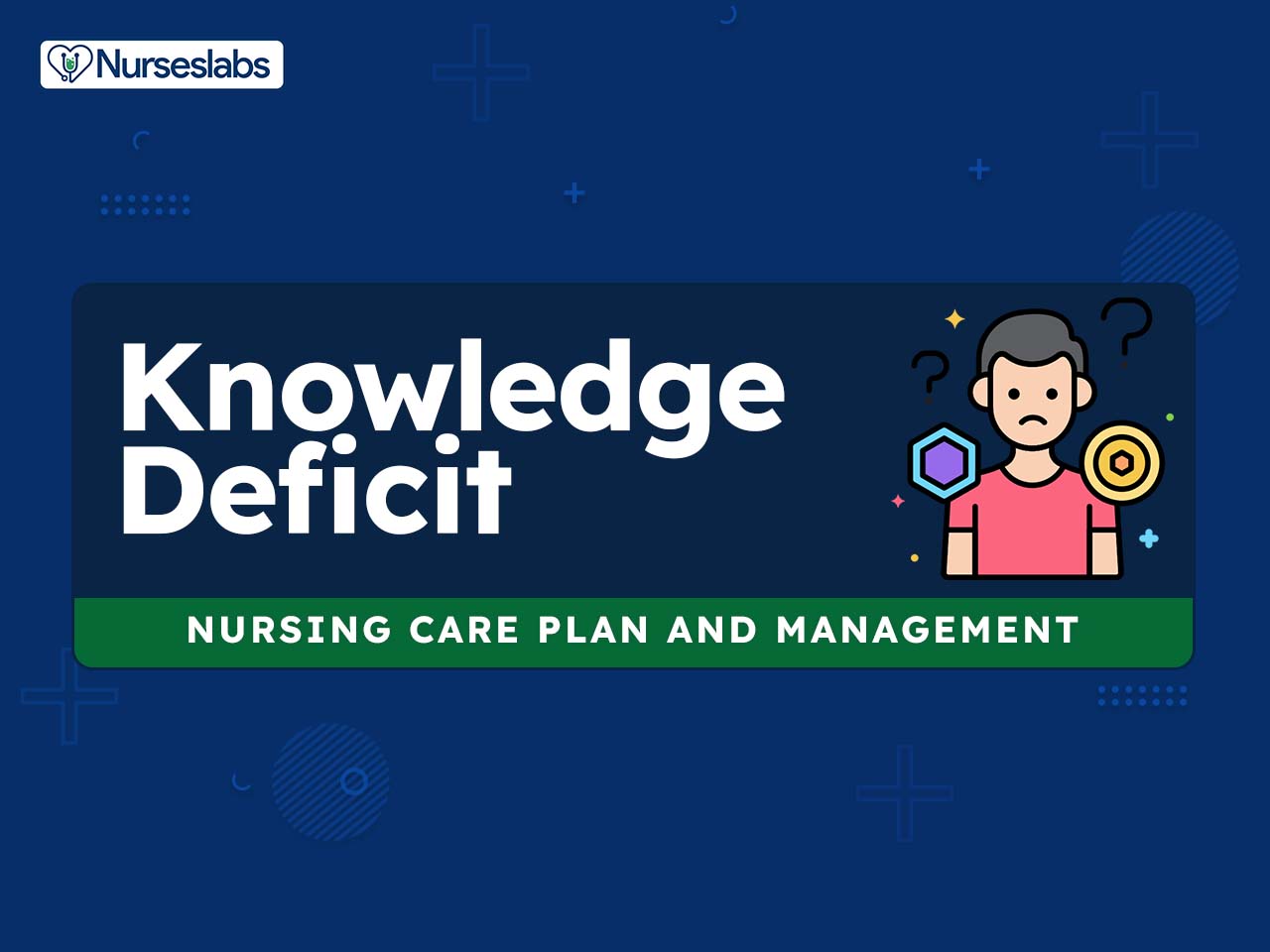
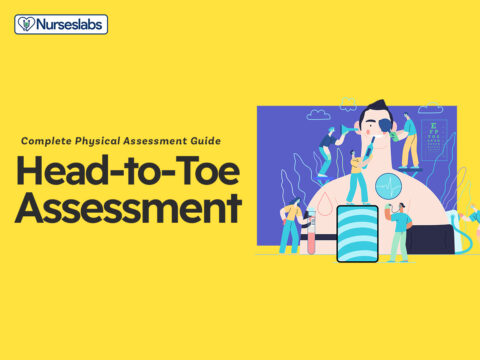
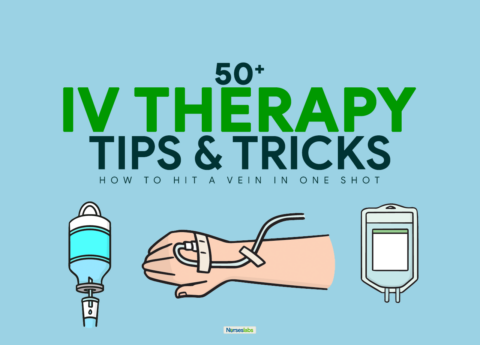
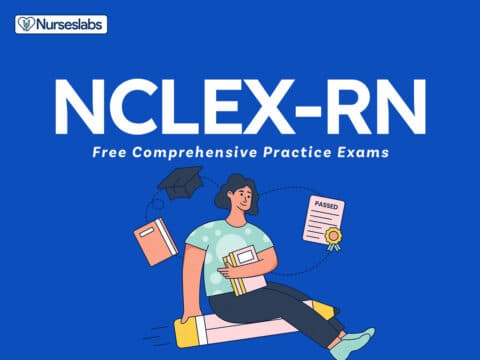
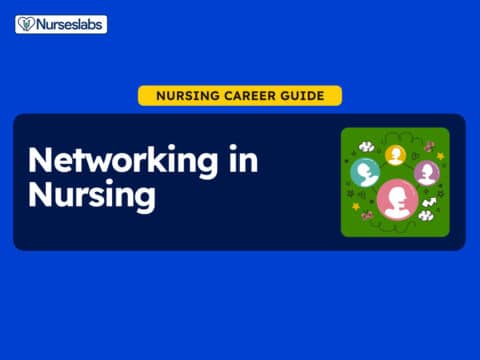
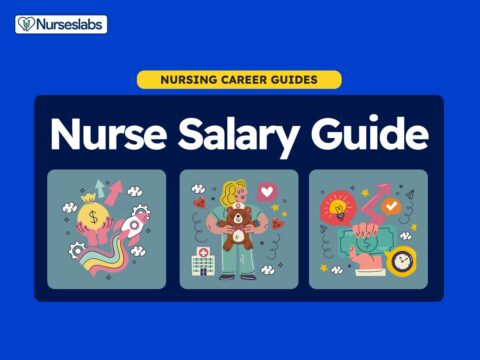

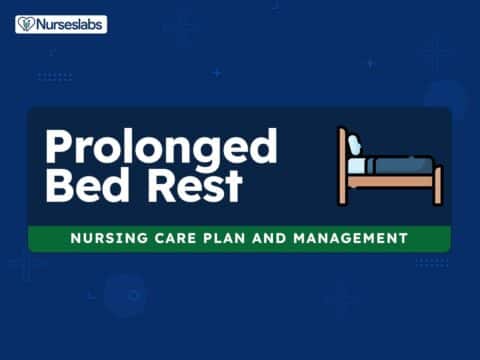
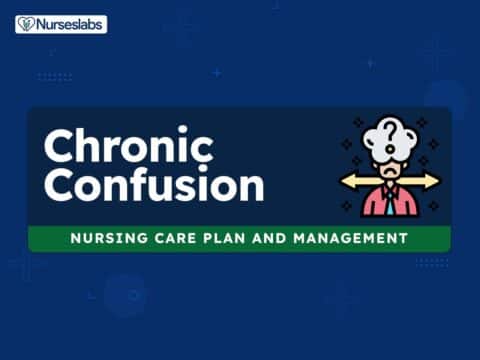
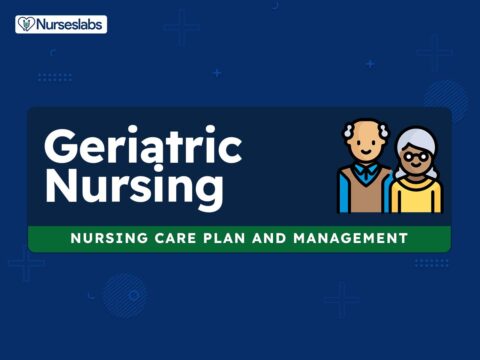
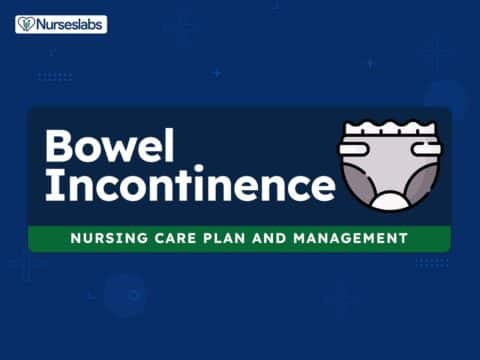
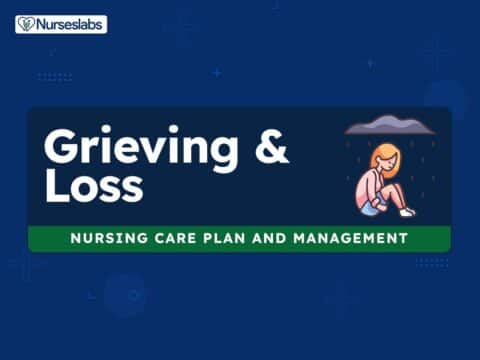
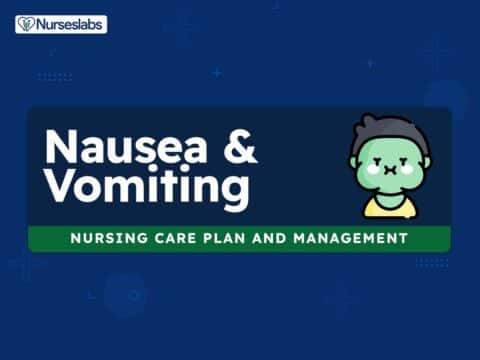
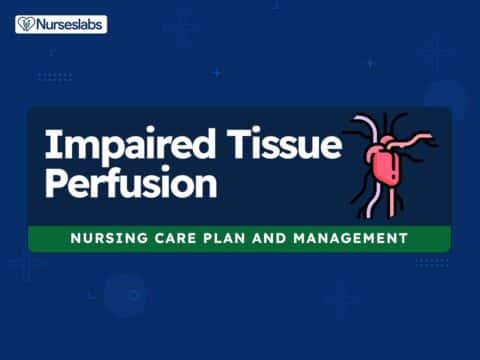

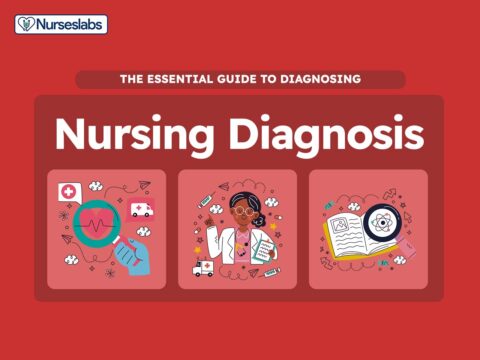
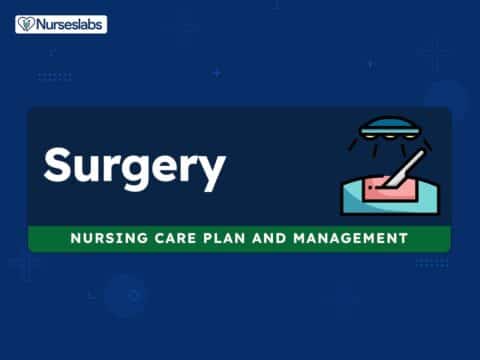

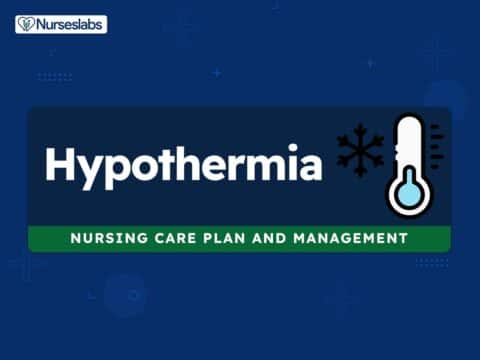
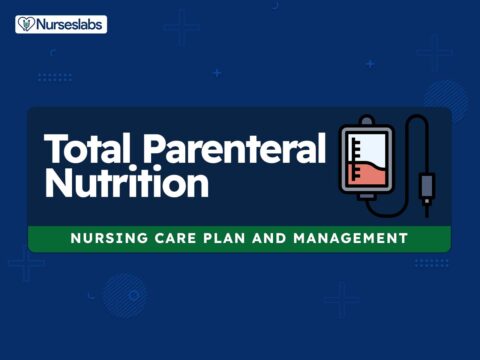
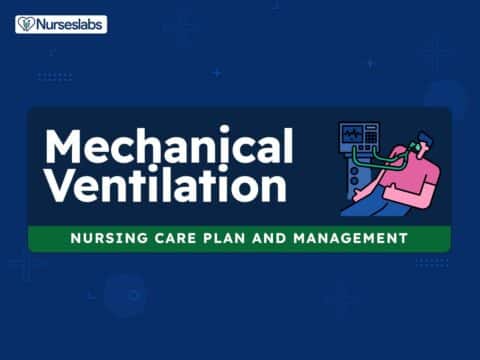
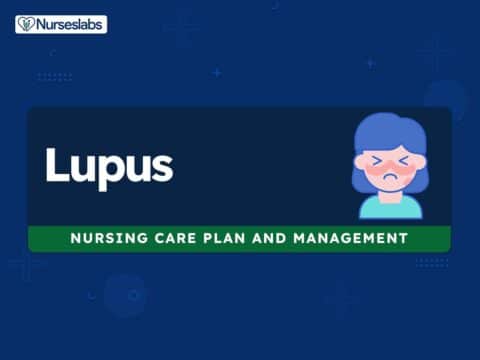
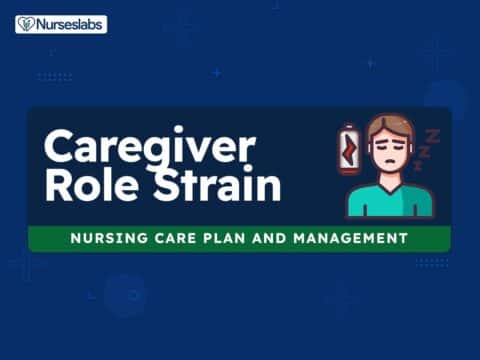
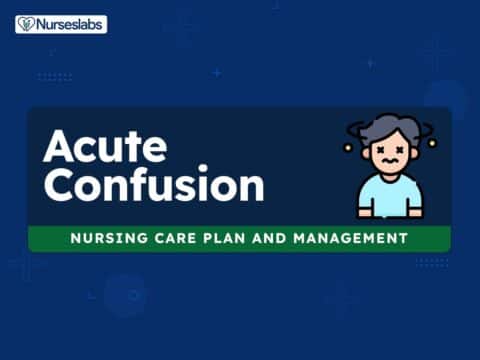
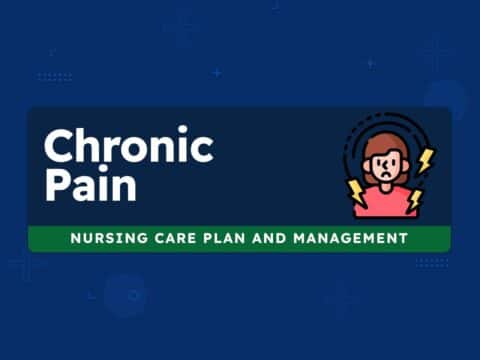
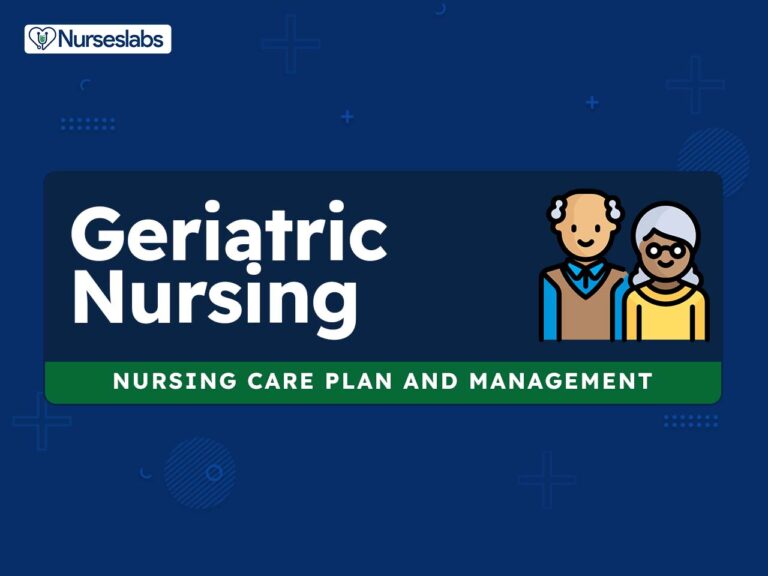


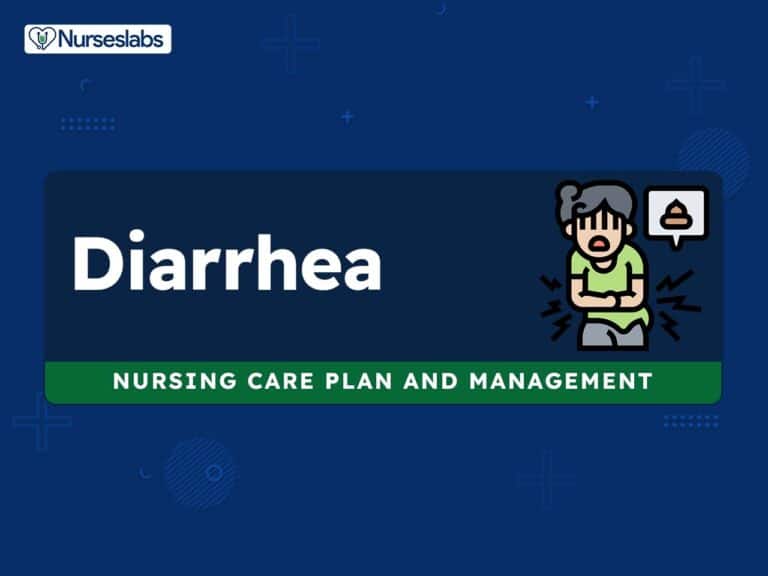

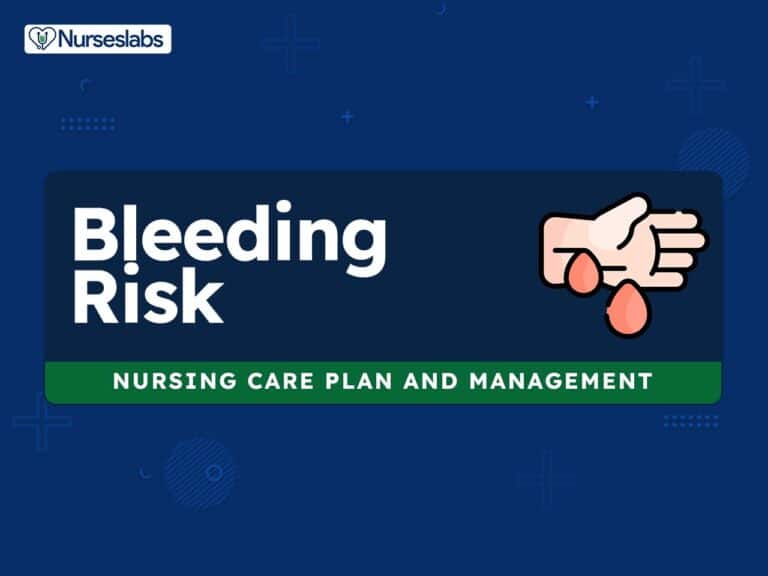

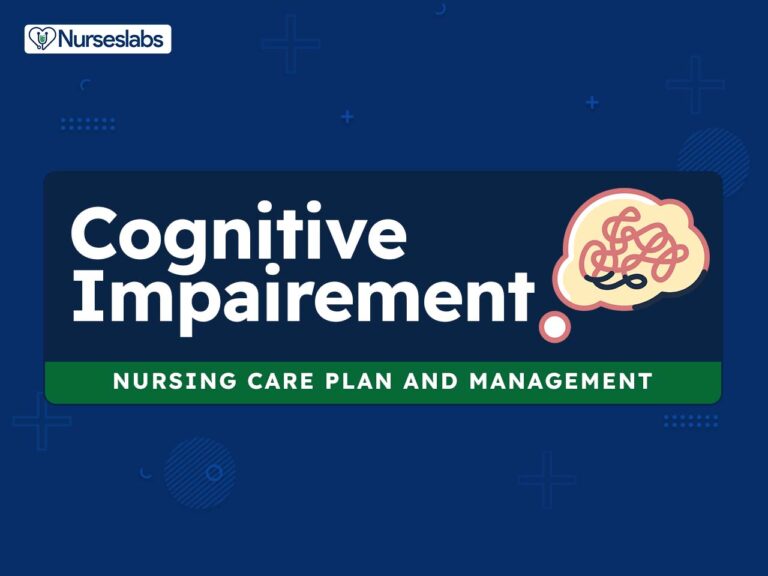
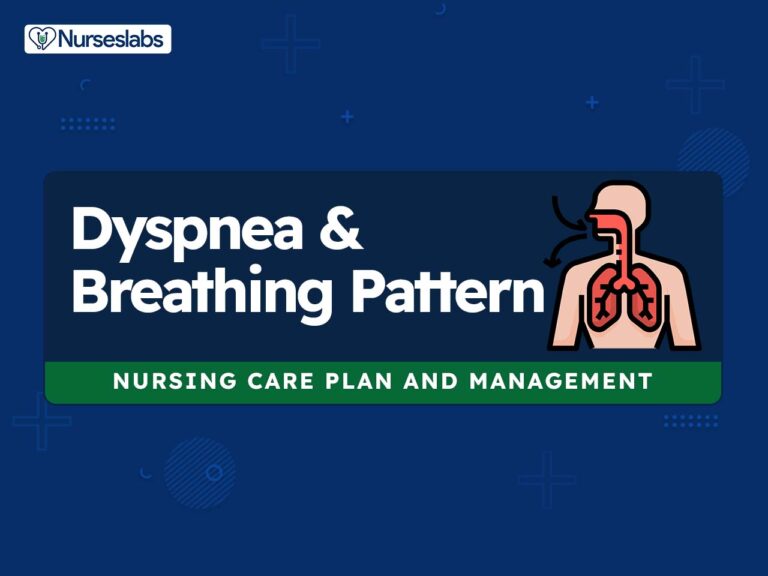



Leave a Comment